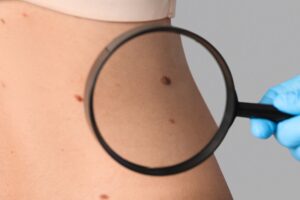Have you ever felt that everyone seems to look flawless online? Even at the grocery store or a football game, at first glance it looks like a sea of perfect faces. It’s only when we look closely that we notice the imperfections: the scars and birthmarks that set us apart from each other.
Some of those imperfections tell a story — they help make us who we are. But others can be distractions. Two of these kinds of “imperfections” are lesions that are quite obvious: lip hemangiomas and venous lakes. What are they, and should you treat them or not?
What is a Hemangioma and How Common Is It?
Hemangiomas are a type of vascular tumor that shows up as red or purple growths anywhere on your body, but frequently (in more than half of cases) on the head and neck. One type that’s particularly concerning is lip hemangiomas, because they’re so visible. They’re benign, but they can be uncomfortable or simply annoying.
While roughly 75% of people aged 75 and older have cherry hemangiomas, the general category of hemangiomas is most common in infants and children. Given that a hemangioma can actually look like other kinds of issues, it’s always best to ask a professional dermatologist who has seen hundreds of cases.
Although they’re called tumors, hemangiomas are benign. The term tumor simply means an irregular mass of tissue. That’s what hemangiomas are: irregular, abnormally dense groups of blood vessels that occur near the surface of the skin.
Hemangiomas aren’t hereditary and they’re not anyone’s fault. The good news is that lip hemangiomas can resolve on their own after a few years, especially with younger children and babies.
What Are My Treatment Options for Hemangioma?
You might want to look into treatment for hemangioma if it interferes with your child’s vital functions, like breathing, seeing, hearing, or going to the bathroom. In an adult patient, it completely depends on your level of comfort. Many patients may elect to have the mark removed simply due to the lesion attracting too much attention or interfering with their social life.
Options include:
- Beta blocker medicines. If the hemangioma is small, your doctor may recommend applying a gel containing a beta blocker like timolol, or taking a liquid medication called propranolol. This treatment does have potential side effects, including high blood sugar, low blood pressure, and wheezing.
- Corticosteroid medicines. Another option is corticosteroids, which can be given via an injection or applied topically. In either case, side effects can include thinning skin in that area and/or a lack of growth.
- Laser treatment. Removing a hemangioma can be done by a board certified dermatologist using a laser treatment. This can be done in a fairly short appointment, with no lasting side effects. Laser types include pulsed dye laser (PDL).
Venous Lakes
Venous lakes consist of just one dilated blood vessel, compared to hemangioma, which is a cluster of blood cells. Venous lakes show up more often on the lips, and specifically the lower lip. They’re more often blue than red, because they consist of deoxygenated blood. Confusingly, they can be either flat or domed.
“While venous lakes are typically harmless, it’s important to consult a dermatologist to confirm the diagnosis and discuss treatment options if it becomes bothersome or changes over time,” advises Dr. Hakimi. “Any change or new lesion should be evaluated by a professional.”
In contrast to hemangiomas, which aren’t specifically caused by any one action, venous lakes can result from:
- Sun exposure and UV damage
- Aging and weakening of blood vessel walls
- Trauma or injury to the area
- Smoking
Sometimes venous lakes just appear, with no clue about their origin. Venous lakes tend to occur in people over 50, with more cases in people over 70. In terms of how common they are, one study found them in less than 4% of dermatology cases.
Venous lakes differ from hemangiomas in that they rarely go away on their own. You’ll need to look into treatment options to remove a venous lake if it is bothering you.
Treatment Options for Venous Lakes
- Laser Treatment: Lasers are now the most common and effective treatments, with minimal scarring or side effects. The pulsed dye laser has been the most commonly used.
- Sclerotherapy: This option involves injecting a sclerosing agent like 1% polidocanol. Like lasers, this can be both effective and efficient.
- Surgery: This is less common now, because of the risk of scarring, but a small surgery is still an option.
While both hemangiomas and venous lakes are benign, they can be bothersome. As with any skin concern, if you have doubts or questions, call 916.983.3373 or text 916.299.5646 to schedule a consultation. The best treatment comes from an accurate diagnosis.



